Psychology 2 - Lesson 2: Psychological Theories
1/66
Earn XP
Description and Tags
Psychology 2 Lesson 2
Name | Mastery | Learn | Test | Matching | Spaced |
|---|
No study sessions yet.
67 Terms
Lesson 2: Psychological Theories
Lesson 2: Psychological Theories
According to the Psychoanalytic Theory, what two things influence our behavior?
(A) Our current emotions and unconscious desires
(B) Our current emotions and future expectations
(C) Our childhood experiences and unconscious desires
(D) Our childhood experiences and future expectations
(C) Our childhood experiences and unconscious desires
According to the Psychoanalytic Theory, our behavior is influenced by our childhood experiences and unconscious desires.
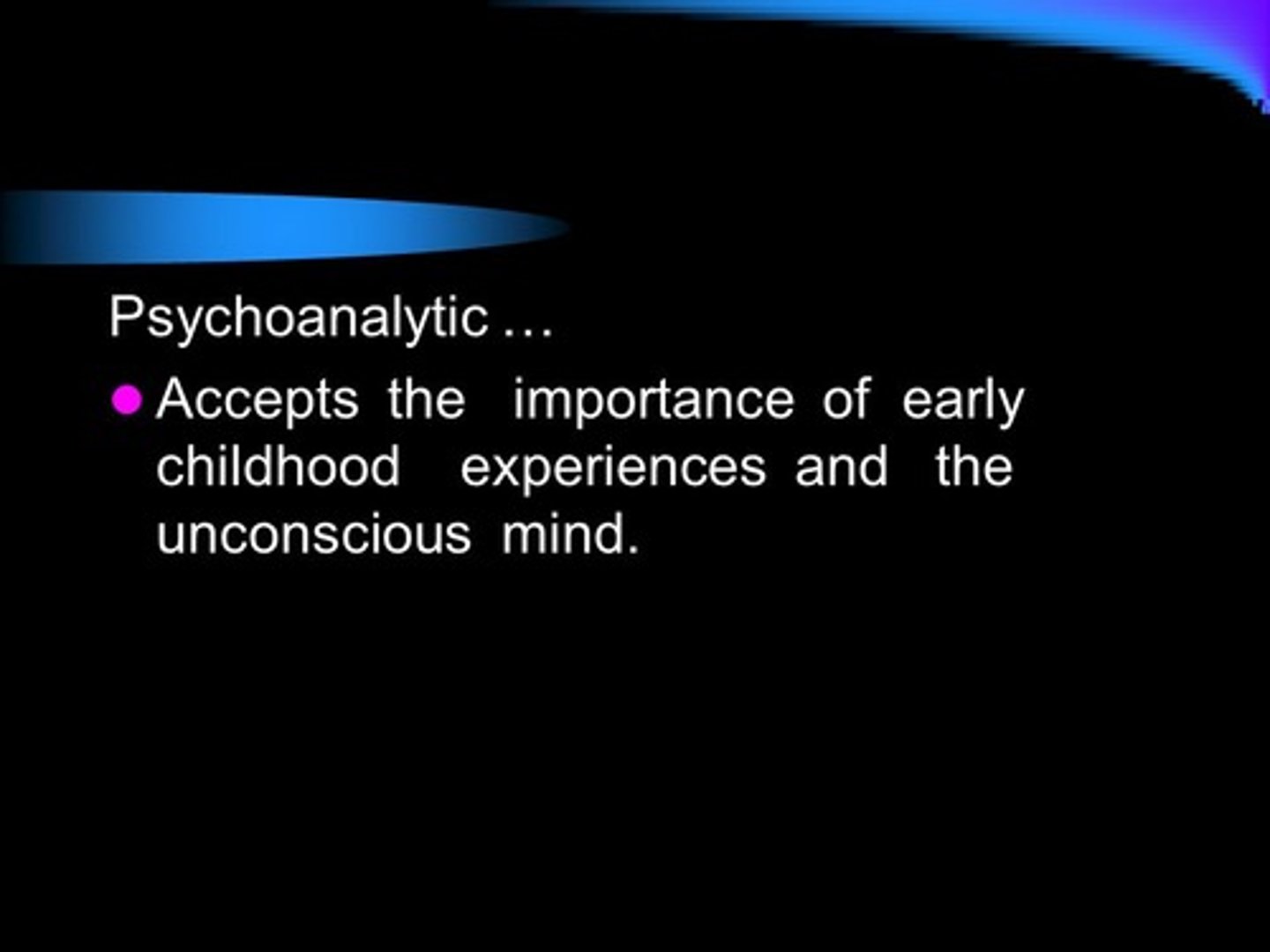
Libido is the natural energy source that fuels the mechanisms of the mind. When Libido becomes fixed at a certain stage of development, what does Freud propose occurs at this point?
Freud would propose that you would end up stuck in that stage of development.

CRB Libido can also be thought of as the "life instinct", and is opposed by what other instinct in the classical Psychoanalytic Theory?
(A) Death Instinct
(B) Pain Instinct
(C) Id Instinct
(D) Evilibido
(A) Death Instinct
The Death Instinct drives aggressive behaviors and comes from the unconsciousness to oppose Libido.
In the analogy of the iceberg, which parts of our mind are completely below the surface of the water (only part of our unconscious)?
I. Id
II. Ego
III. Superego
(A) I Only
(B) I and II Only
(C) II and III Only
(D) I, II, and III
(A) I Only
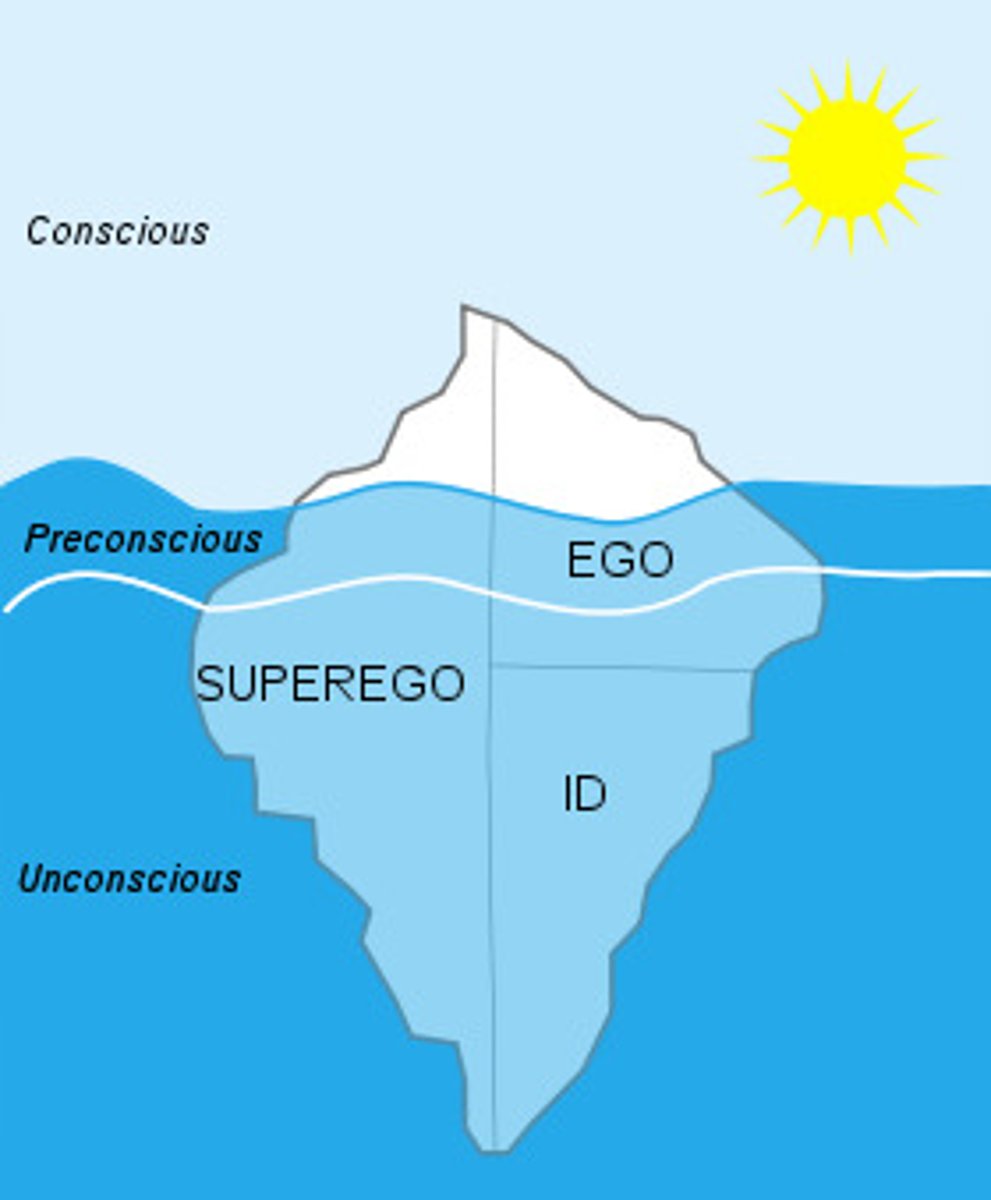
You are really craving ice cream. Describe how the Id, Ego, and Superego might interact within your mind as you face this temptation.
The Id wants immediate gratification and would drive you to just eat the ice cream NOW.
The Superego is moral oversight and represents the values of society, which would tell you to never eat ice cream because it is not good for your body.
The Ego acts as a mediator would balance out the two, resulting in a compromise where you eat some ice cream after patiently waiting for it.
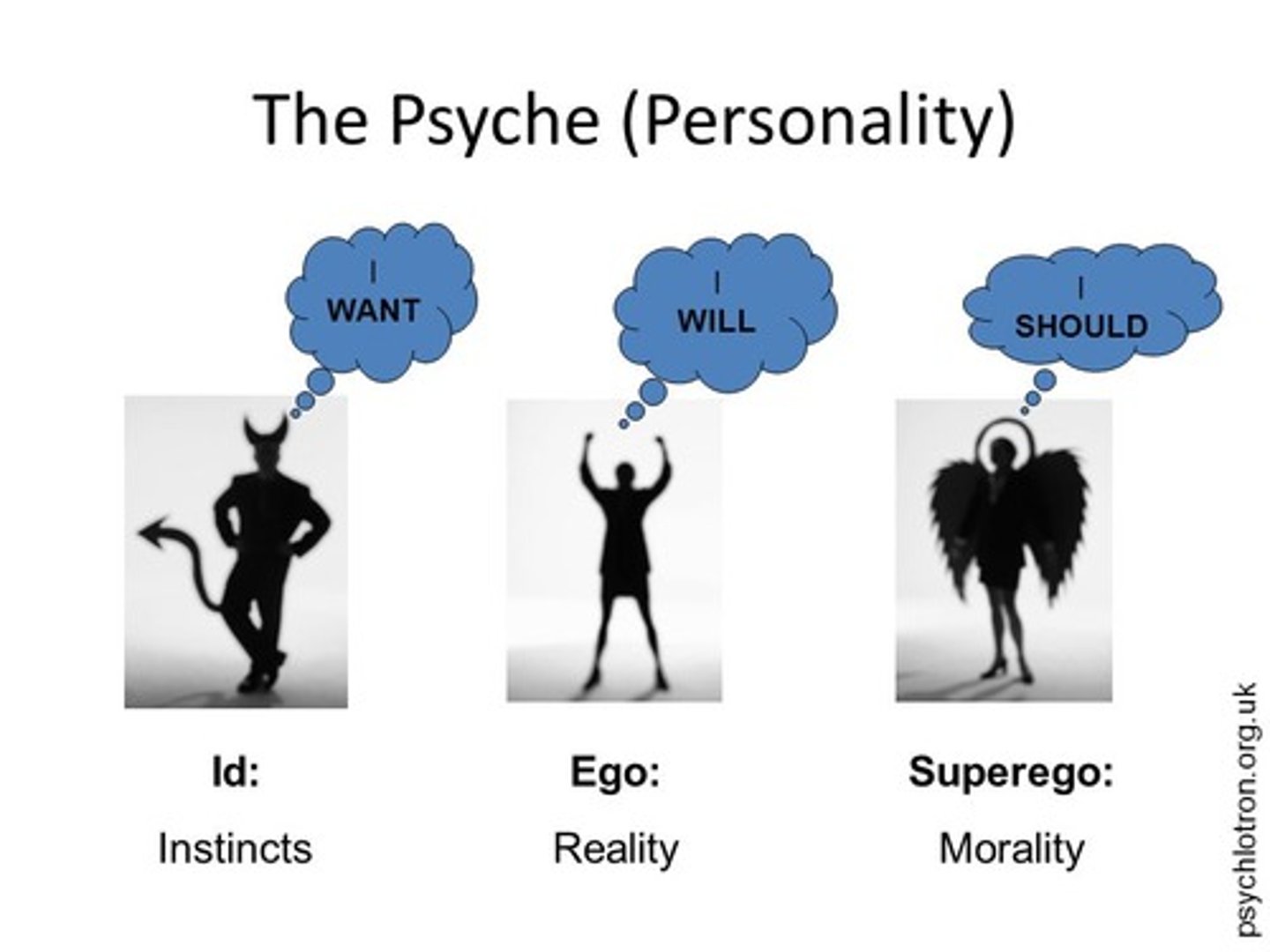
CRB Which of the following are ruled by the Reality Principle to find realistic ways to achieve its goals?
I. Id
II. Ego
III. Superego
(A) II Only
(B) I and II Only
(C) II and III Only
(D) I, II, and III
(A) II only
The Ego is the only personality component that would follow the reality principle.
CRB True or false? Alongside the Reality Principle, there is also a Pleasure Principle for the Id and a Virtue Principle for the Superego.
False. Alongside the Reality Principle, there is a Pleasure Principle for Id, but there is no Principle for the Superego to follow.
CRB Fill in the blanks: The ________ Process refers to the Ego guiding or inhibiting the Id's pleasure principle and the Id's actions. The _________ Process refers to the Id responding to frustrations, and wanting immediate satisfaction.
(A) Tertiary, Secondary
(B) Quaternary, Tertiary
(C) Secondary, Primary
(D) Subconscious, Conscious
(C) Secondary, Primary
The Secondary Process refers to the Ego guiding or inhibiting the Id's pleasure principle and the Id's actions. The Primary Process refers to the Id responding to frustrations, and wanting immediate satisfaction.
In other words, the Secondary process is the Ego using thinking and reasoning to guide Id, whereas primary processes are dominated by Id.
CRB Which of the following terms best describes a person's daydreaming or fantasy that meets the Primary Process' wants and needs?
(A) Instant Gratification
(B) Wish Fulfillment
(C) Preconscious Gratification
(D) Conscious Fulfillment
(B) Wish Fulfillment
Wish Fulfillment is best described as a person's mental imagery that meets the wants and needs of the pleasure principle.
The humanistic theory emphasizes that we as humans have __________ and that we can actively develop ourselves to our highest potential and reach ____________________.
(A) Individuality, Summation
(B) Individuality, Self-actualization
(C) Free Will, Summation
(D) Free Will, Self-actualization
(D) Free Will, Self-actualization
The humanistic theory emphasizes that we as humans have Free Will and that we can actively develop ourselves to our highest potential and reach Self-actualization.
Compare and contrast the Psychoanalytic Theory and the Humanistic Theory?
Psychoanalytic Theory thinks of us as being controlled by our unconscious. Sees us as animals that have intense desires.
Humanistic Theory, however, views us as being in control and focuses on our conscious thoughts and actions. Sees us as inherently good and wanting to improve.
Who of the following are considered proponents of the Humanistic Theory?
I. Carl Rogers
II. Carl Jung
III. Abraham Maslow
(A) I and II Only
(B) II and III Only
(C) I and III Only
(D) I, II, and III
(C) I and III Only
Carl Rogers and Abraham Maslow were both proponents of the Humanistic Theory. Carl Jung is closely tied to the Psychoanalytic Theory as he worked personally with Freud.
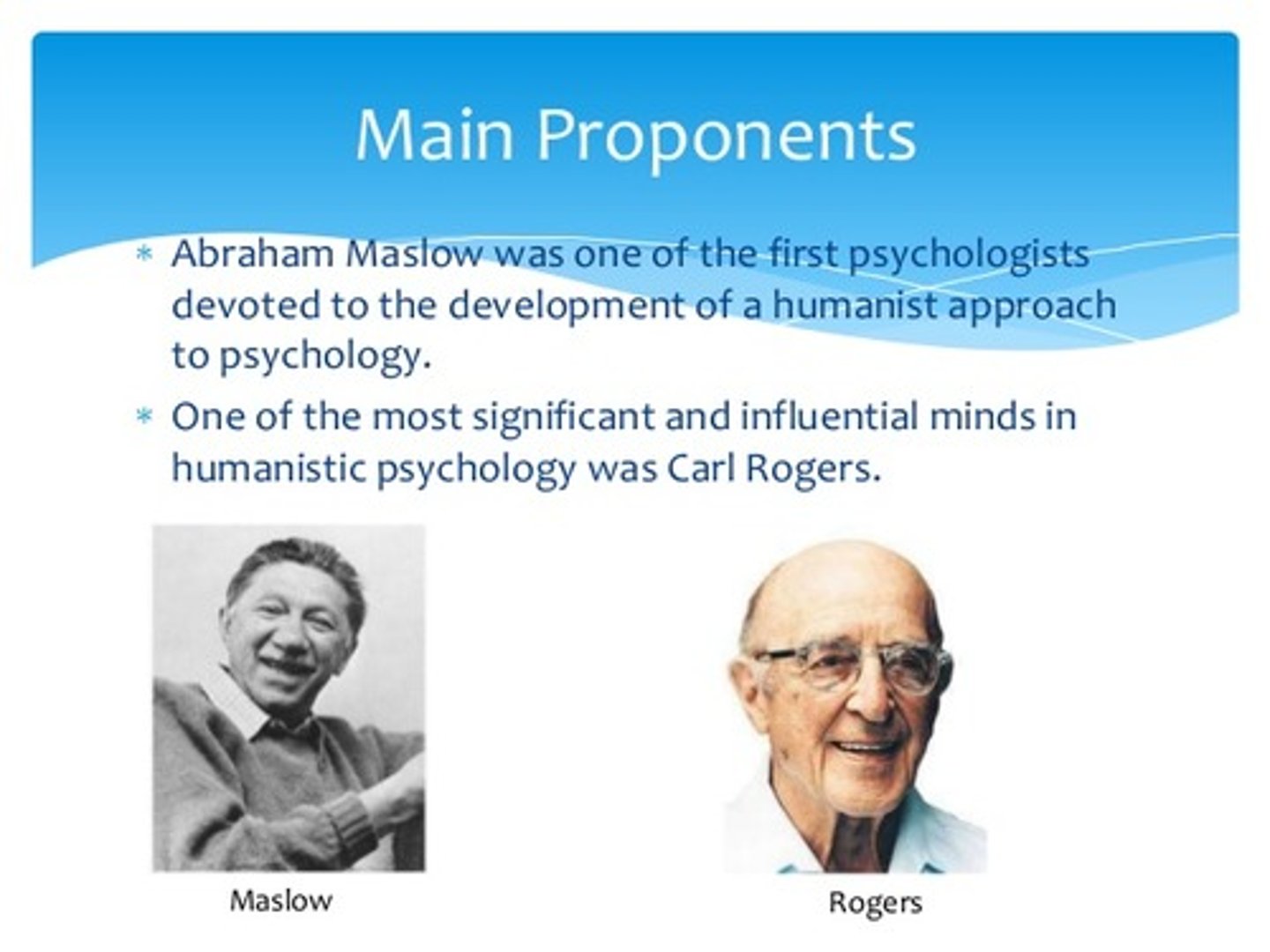
CRB Which of the following Psychologists was NOT a follower of Freud that developed their own versions of Psychoanalytic Theory?
(A) Erik Erikson
(B) Carl Jung
(C) Alfred Adler
(D) Lev Vygotsky
(D) Lev Vygotsky
Erik Erikson, Carl Jung, Alfred Adler and Karen Horney were all followers of Freud and developed their own versions of Psychoanalytic Theory.
CRB True or false? These followers of Freud typically adapted Psychoanalytic Theory to make personality more changeable throughout life, not just in early childhood experiences.
True. These followers of Freud typically adapted Psychoanalytic Theory to make personality more changeable throughout life, not just in early childhood experiences.
Their versions also typically see people motivated by some type of positive Growth instinct or some positive outside forces, not just sensual urges.
CRB Adler coined and popularized the Inferiority Complex.
True or false? The Inferiority Complex is best described as a sense of incompleteness and imperfection that drives each individual. This feeling of inferiority makes individuals strive for superiority, and this is the driving force behind personality according to Adler.
True. The Inferiority Complex is best described as a sense of incompleteness and imperfection that drives each individual. This feeling of inferiority makes individuals strive for superiority, and this is the driving force behind personality according to Adler.
CRB Which of the following are correct descriptions of main points of Adler's Theory of Personality?
I. The Creative Self describes the force that establishes personality, driving individuals to shape and embrace uniqueness.
II. Style of Life comes out of the Creative Self, and describes in which ways someone feels inferior.
III. Fictional Finalism represents the idea that people will ignore past experiences, thinking they are not relevant to their current inferiorities.
(A) I only
(B) II only
(C) I and II only
(D) I and III only
(A) I only
The following are correct descriptions of Adler's Theory of Personality:
I. The Creative Self describes the force that establishes personality, driving individuals to shape and embrace uniqueness.
II. Style of Life comes out of the Creative Self, and describes the unique way an individual strives for superiority.
III. Fictional Finalism represents the idea that people are more motivated by expectations of the future than past experiences.
CRB Carl Jung had a very similar theory to Freud's, splitting the unconscious into two parts: a Personal and a Collective Unconscious. Jung used archetypes to explain the Collective Unconscious, which he saw as residual from early ancestors, like common experiences we shared. Which of the following Archetypes is NOT properly described?
(A) The Anima is a collection of repressed female qualities in males, i.e. "Man's Inner Woman".
(B) The Animus is a collection of repressed male qualities in females, i.e. "Woman's Inner Man"
(C) The Shadow Archetype is responsible for socially reprehensible thoughts, parallel to Freud's Id.
(D) The Self is the parts that we try to present to the world as representing us, like a mask for public viewing.
(D) The Self is the parts that we try to present to the world as representing us, like a mask for public viewing.
The Self actually refers to where the collective unconscious, personal unconscious, and conscious mind all interact and strive for unity. Each of the following are accurate descriptions of Jungian Archetypes:
I. The Anima is a collection of repressed female qualities in males, i.e. "Man's Inner Woman".
II. The Animus is a collection of repressed male qualities in females, i.e. "Woman's Inner Man"
III. The Shadow Archetype is responsible for socially reprehensible thoughts, parallel to Freud's Id.
IV. The Persona is the parts that we try to present to the world as representing us, like a mask for public viewing.
True or False? Maslow believed that most people will eventually reach self-actualization.
False. Maslow believed that only 1 percent of people will eventually reach self-actualization.
Carl Rogers believed that the path toward self-actualization starts early in our lives and requires a growth-promoting climate. What are the two conditions that are essential to a growth-promoting climate?
A growth promoting climate is a place where we feel free to be our genuine true selves. It is also a place where we feel acceptance/unconditional positive regard from others. Rogers believed that when both these conditions are met, we will develop a self-concept.
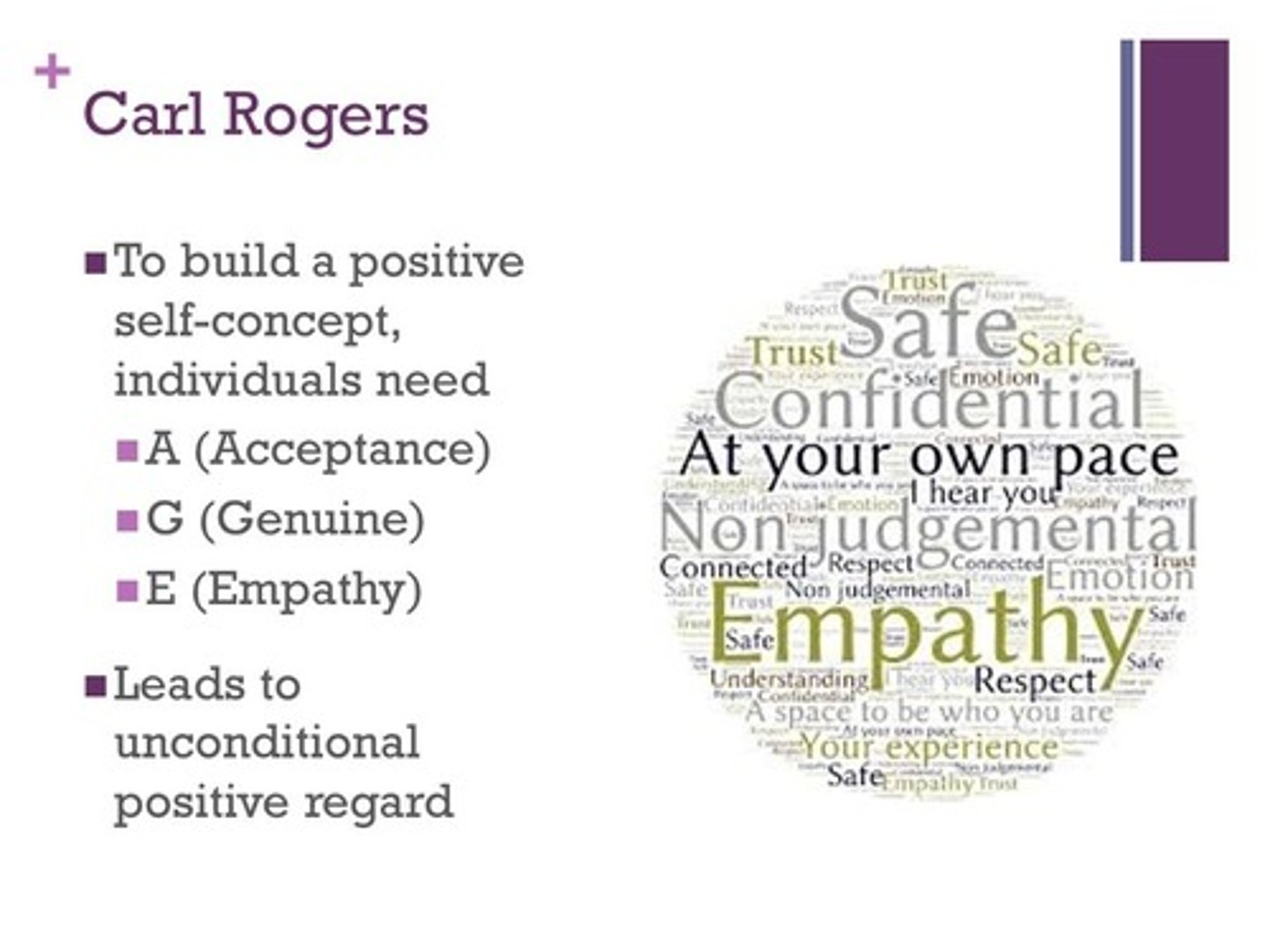
CRB Which of the following statements relating to Rogers and his Humanistic Perspective are true?
I. People will feel Incongruence if a situation contradicts their self-concepts.
II. Through Incongruence, people can learn their true self-concepts, or core values.
III. People usually find it easier to modify their self-concepts than to deny or distort situations they face.
(A) I only
(B) I and II only
(C) I and III only
(D) I, II and III
(B) I and II only
Each of the following statements about Humanistic perspective and Incongruence are true:
I. People will feel Incongruence if a situation contradicts their self-concepts.
II. Through Incongruence, people can learn their true self-concepts, or core values.
III. People usually find it more difficult to modify their self-concepts than to deny or distort situations they face.
CRB Fill in the blanks: Humanistic Therapy, also called __________, aims to provide environments to help _________ accept their emotional reactions and learn to grow from them.
(A) Person-Centered Therapy, Clients
(B) Psychotherapy, Patients
(C) Cognitive Behavioral Therapy, Patients
(D) Behavioral Therapy, Clients
(A) Person-Centered Therapy, Clients
Humanistic Therapy, also called Person-Centered Therapy, aims to provide environments to help Clients accept their emotional reactions and learn to grow from them.
Note that calling the receivers of therapy Clients is important, as it is meant to suggest the therapist and receiver are on the same level. This tries to avoid any power dynamics and remove any barriers to trust!
What makes the Biologic Theory unique as compared to the Humanistic and Psychoanalytic Theories?
The Biologic Theory posits that our behavior and personality are inherited whereas the Humanistic and Psychoanalytical Theory propose that they develop from our experiences.
Mwape just barely arrives at a new school. She meets two new friends, Becky and Sarah. Mwape starts inviting them over to her house and leading them in several of her favorite games. Does Mwape demonstrate Social Potency or Traditionalism? What about Sarah and Becky? Explain why?
Social Potency is the degree to which a person assumes leadership and mastery roles in a social situation. Mwape is demonstrating this by quickly taking control in her new friend group.
Sarah and Becky likely demonstrate Traditionalism as they are quick to follow Mwape's lead.
Levi has a long Dopamine-4-receptor gene. He also hates sky diving, gambling, and even stays home on Halloween to avoid the thrill. He is very calm and not interested in such activities. Do Levi's actions confirm or disconfirm the Biologic Theory?
Having a longer Dopamine-4-receptor gene is associated with being a thrill-seeker, but just because you have a genetic disposition for something doesn't mean you will certainly act that way. For this reason, Levi's actions neither confirm nor disconfirm the Biologic Theory.
Why is Temperament often associated with the Biologic Theory?
Temperament is an innate disposition and the Biologic Theory is focused on the innate causes of our behavior.

CRB Jeffrey Alan Gray holds that personality is determined by three brain systems, focusing around punishment and reward systems. How does this compare to Biologic Theory of Personality?
Jeffrey Alan Gray's theory is actually considered part of the Biologic Perspective. With that strict focus of personality being caused by biological structures, this should make sense.
Trait theory is focused on the _________________ of behavior whereas other theories are focused on the ______________ of behavior.
(A) Describing, Origins
(B) Origins, Describing
(C) Causes, Effects
(D) Effects, Causes
(A) Describing, Origins
Trait theory is focused on the describing of behavior whereas other theories are focused on the origins of behavior.
To gain a better idea of Trait Theory, take the Myer-Briggs Personality Test here: https://www.16personalities.com/enfj-personality
What were your results?!

I, Andrew, was a "PROTAGONIST (ENFJ-A)". Which of the following are a key part of my personality according to this?
I. Thinking
II. Judging
III. Intuitive
(A) I Only
(B) II Only
(C) I and II Only
(D) II and III Only
(D) II and III Only
I was a "PROTAGONIST (ENFJ-A)," which means I am Extraverted, Intuitive (III), Feeling, Judging (II), and Assertive.
Hannah believes that there are thousands of different traits out there in the world, but she believes that some traits are more important than others. Which theorist is her thinking most closely in line with?
(A) Big Five Theorists
(B) Hans Eysenck
(C) Gordon Allport
(D) Raymond Cattel
(C) Gordon Allport
Gordon Allport believes that there are over 4500 different traits, but that some are more important than others (i.e. Cardinal Traits being more important than Central or Secondary Traits).

Jack believes that there are 16 traits that can be used to characterize everyone. Which theorist is her thinking most closely in line with?
(A) Big Five Theorists
(B) Hans Eysenck
(C) Gordon Allport
(D) Raymond Cattel
(D) Raymond Cattel
Raymond Cattel believed that there are 16 traits that can be used to characterize us.
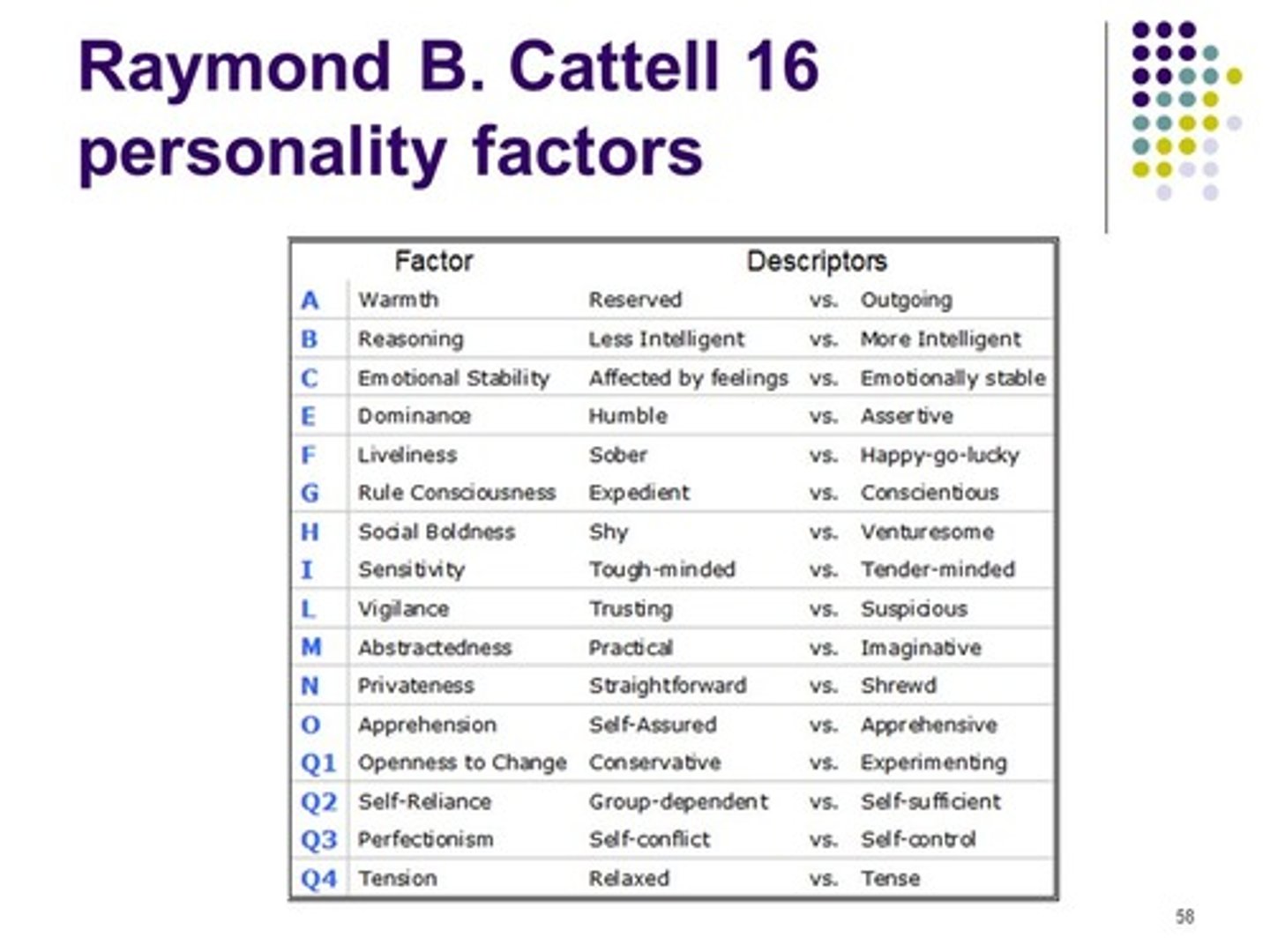
Which theorist did not rely on Factor Analysis to develop their theory?
(A) Big Five Theorists
(B) Hans Eysenck
(C) Gordon Allport
(D) Raymond Cattel
(C) Gordon Allport
Factor analysis is a complex statistical method to narrow down a wider set into a smaller, more representative and significant subset
Gordon Allport did not rely on Factor Analysis to develop his theory.
CRB Fill in the blanks: Raymond Cattel's 16 traits are all _________ traits, since they are evident in a person's behavior. Gordon Allport's theory focuses on ____________ traits, which are factors underlying personality and behavior, and are more abstract.
(A) Surface, Subconscious
(B) Direct, Indirect
(C) Surface, Source
(D) Direct, Subconscious
(C) Surface, Source
Raymond Cattel's 16 traits are all Surface traits, since they are evident in a person's behavior. Gordon Allport's theory focuses on Source traits, which are factors underlying personality and behavior, and are more abstract.
If you were to ask Jackie's 5 besties what single trait best defines her, they all unanimously say that she is determined. Determination could be said to be Jackie's:
(A) Central Trait
(B) Secondary Trait
(C) Cardinal Trait
(D) Distinct Trait
(C) Cardinal Trait
Cardinal Traits are traits that we are most known for and that most closely define us. This is the case with Jackie.
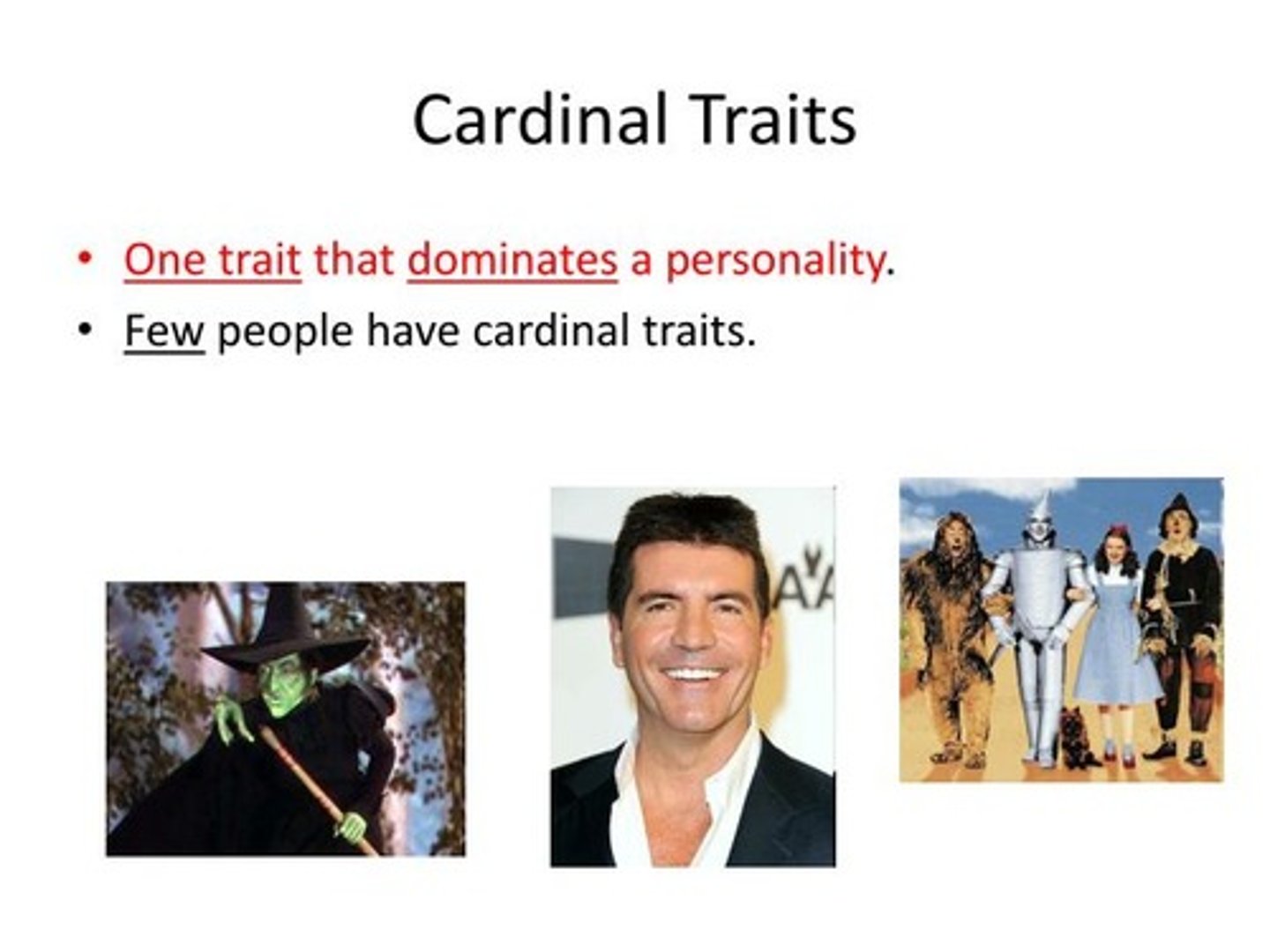
Think about your best friend. What would you say is their Cardinal Trait? What are some of their Central Traits? What are some of their Secondary Traits?
You might say that your best friend's Cardinal Trait is that they are happy. They are always smiling and everyone who meets them recognizes this about them.
To a lesser degree, they are also social, kind, honest, and sincere. These are examples of Central Traits.
Lastly, your best friend might dislike pickles, love reading Twilight, and hate blue cheese. These are preferences, which would be classified as Secondary Traits.
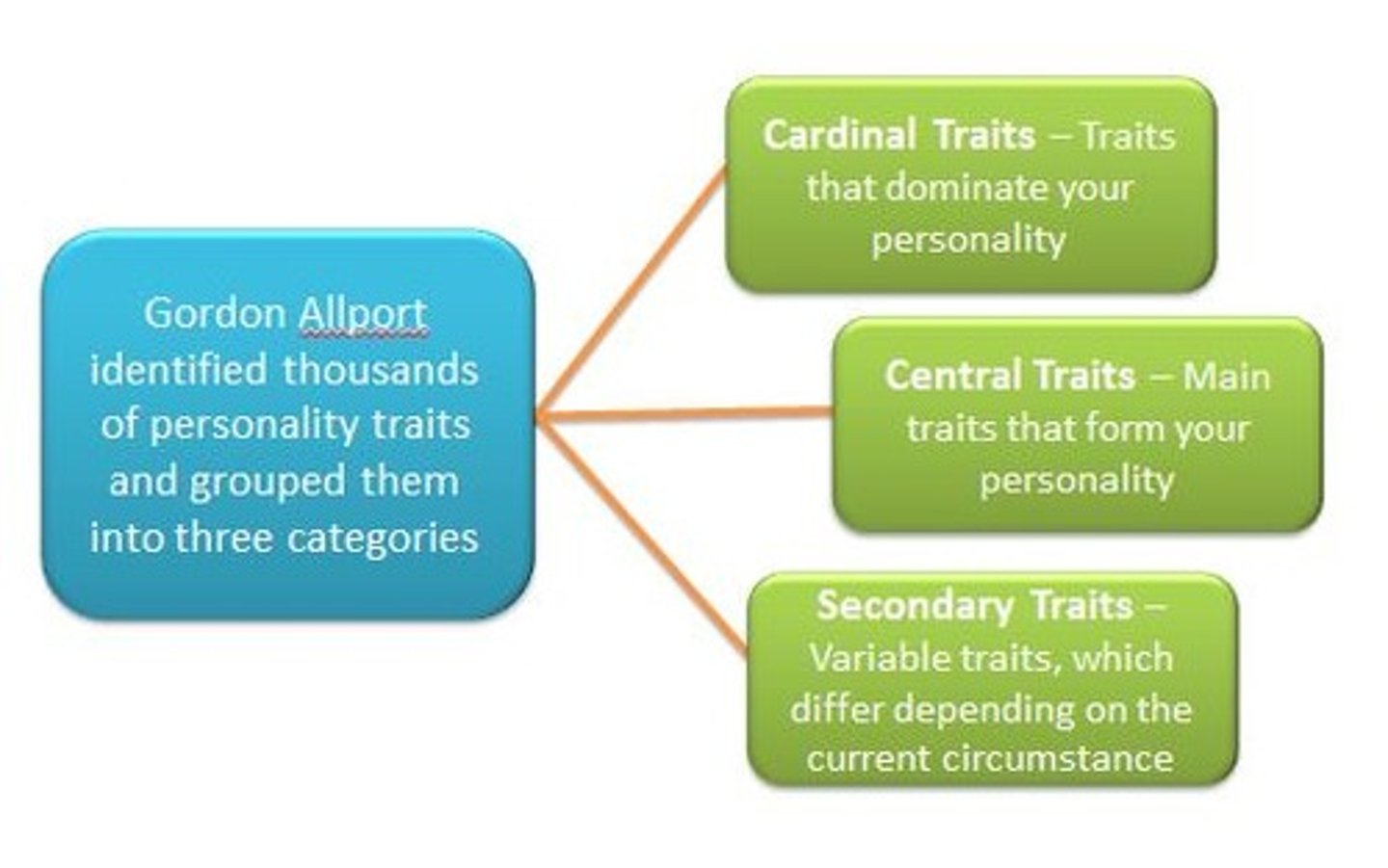
Hans Eysenck believed in three major traits. How does his theory differ from Gordon Allport's?
Gordon Allport believed in over 4500 different traits and broke these down into three categories of differing importance. He believed that some people have some traits and other people have other traits.
Hans Eysenck believed that we all have the same three traits (except Psychoticism) just to different degrees.
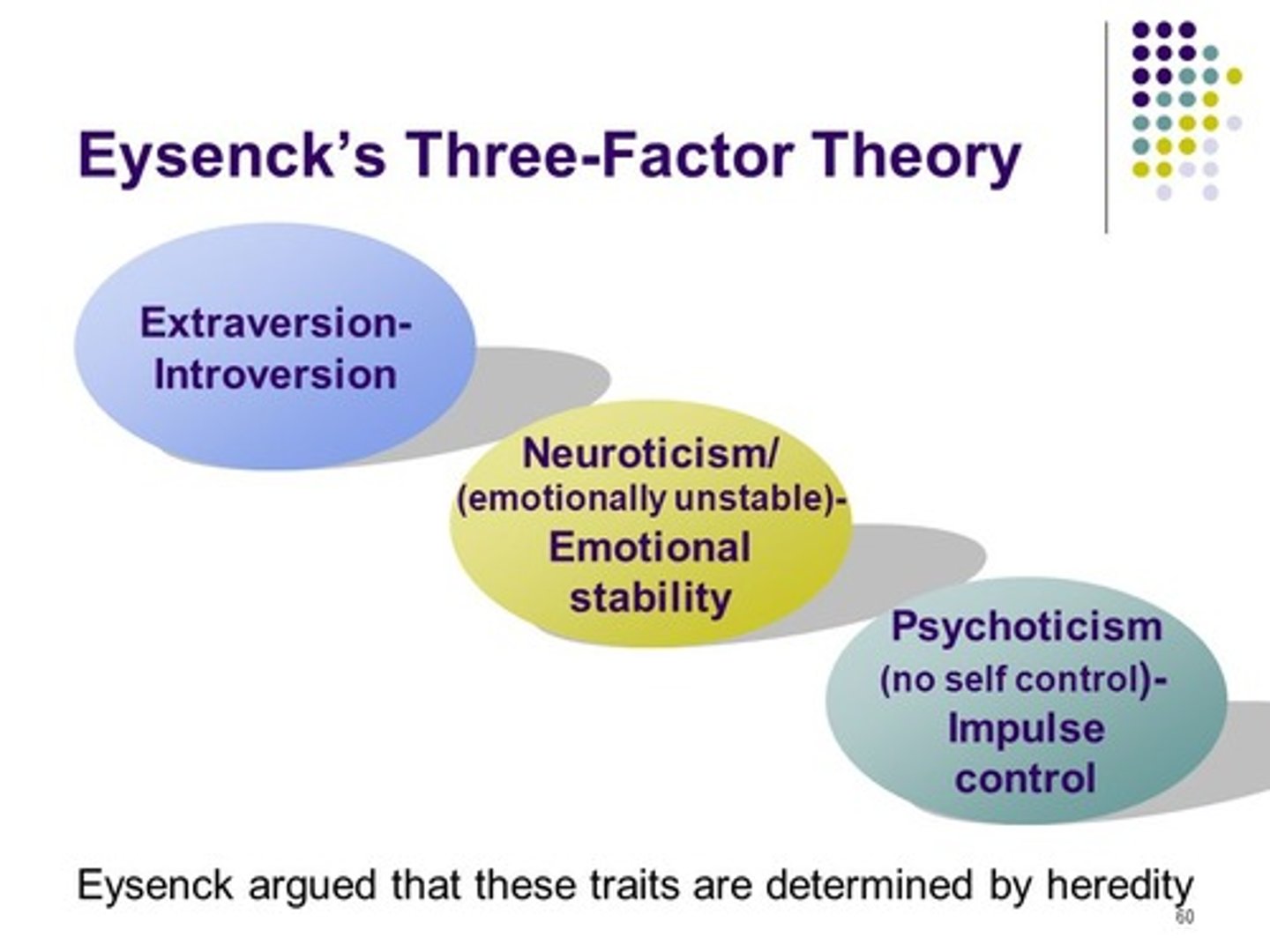
Becky is one of those people who is never upset. She is always calm and collected. After hanging out with friends, she tends to get worn out. Sometimes she believes that some of her friends are out to get her even though they are not. Hans Eysenck believed that Extraversion, Neuroticism, and Psychoticism were the three major traits of one's personality. How do these three traits apply to Becky?
Extroversion is the degree to which someone is outgoing. Becky would be seen to have little of this trait.
Neuroticism is related to someone's emotional stability. Someone with high Neuroticism has low emotional stability, so it sounds like Becky scores low on Neuroticism.
Psychoticism is the degree to which reality is distorted in someone's view. In this case, Becky's view of reality is distorted so she would score high in psychoticism.
What are the Big Five Personality Traits? (Hint: OCEAN)
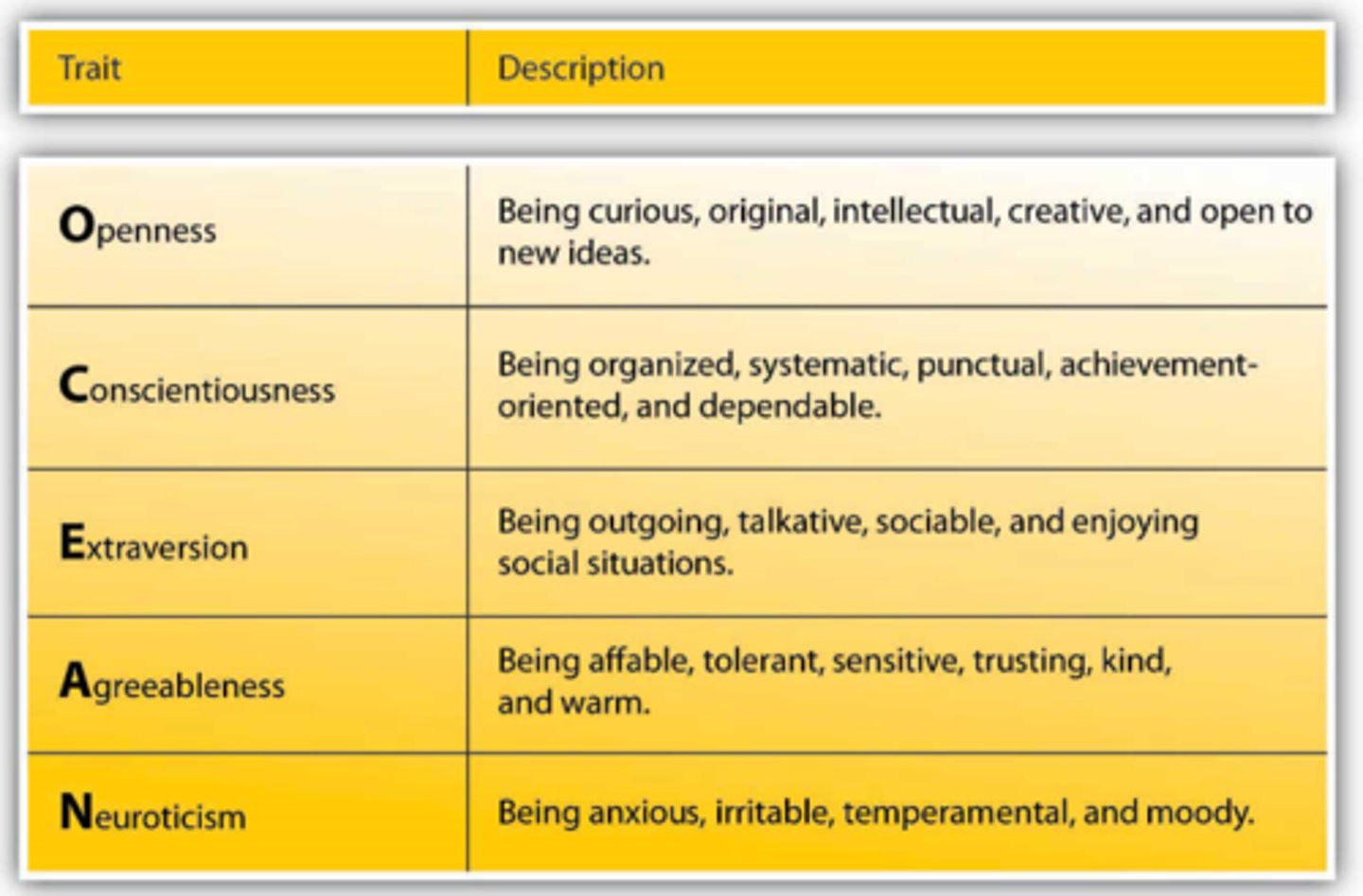
Feel free to take the Big 5 Personality Trait Test to gain a better understanding of it and yourself: https://www.truity.com/test/big-five-personality-test
Feel free to take the Big 5 Personality Trait Test to gain a better understanding of it and yourself: https://www.truity.com/test/big-five-personality-test
CRB True or false? Raymond Cattel used factor analysis to reduce his 16 Surface Traits to develop his own set of five Global Factors, similar to Source Traits, that overlap somewhat with the Big Five (Five-Factor Model).
True. Raymond Cattel used factor analysis to reduce his 16 Surface Traits to develop his own set of five Global Factors, similar to Source Traits, that overlap somewhat with the Big Five (Five-Factor Model).
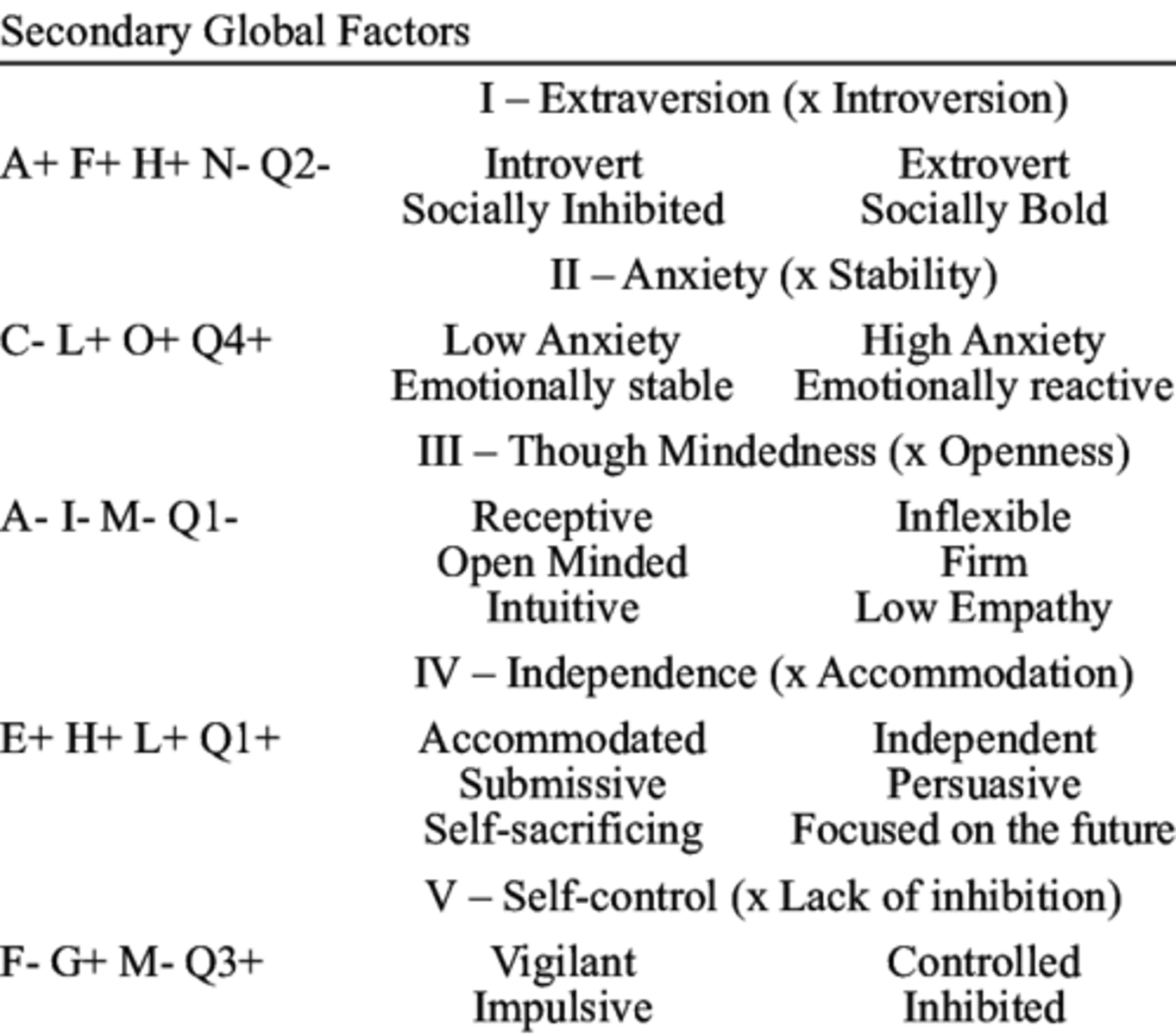
Contrast The Behavioral Theory and the Psychoanalytic Theory.
The Behavioral Theory says that we are influenced by our environment and is focused on observable behavior.
Psychoanalytic Theory, on the other hand, is focused on internal desires and mental states.

Why is Cognitive Theory seen as a bridge between Behaviorism and Psychoanalysis?
It views an internal state, thinking, as a behavior.
Who of the following are considered Behaviorists?
I. Skinner
II. Bandura
III. Pavlov
(A) I Only
(B) I and II Only
(C) II and III Only
(D) I and III Only
(D) I and III Only
Skinner is known for operant conditioning and Pavlov for classical conditioning, both strictly based in behaviors.
Bandura is known for studying the Cognitive Theory and the Bobo Doll experiment.
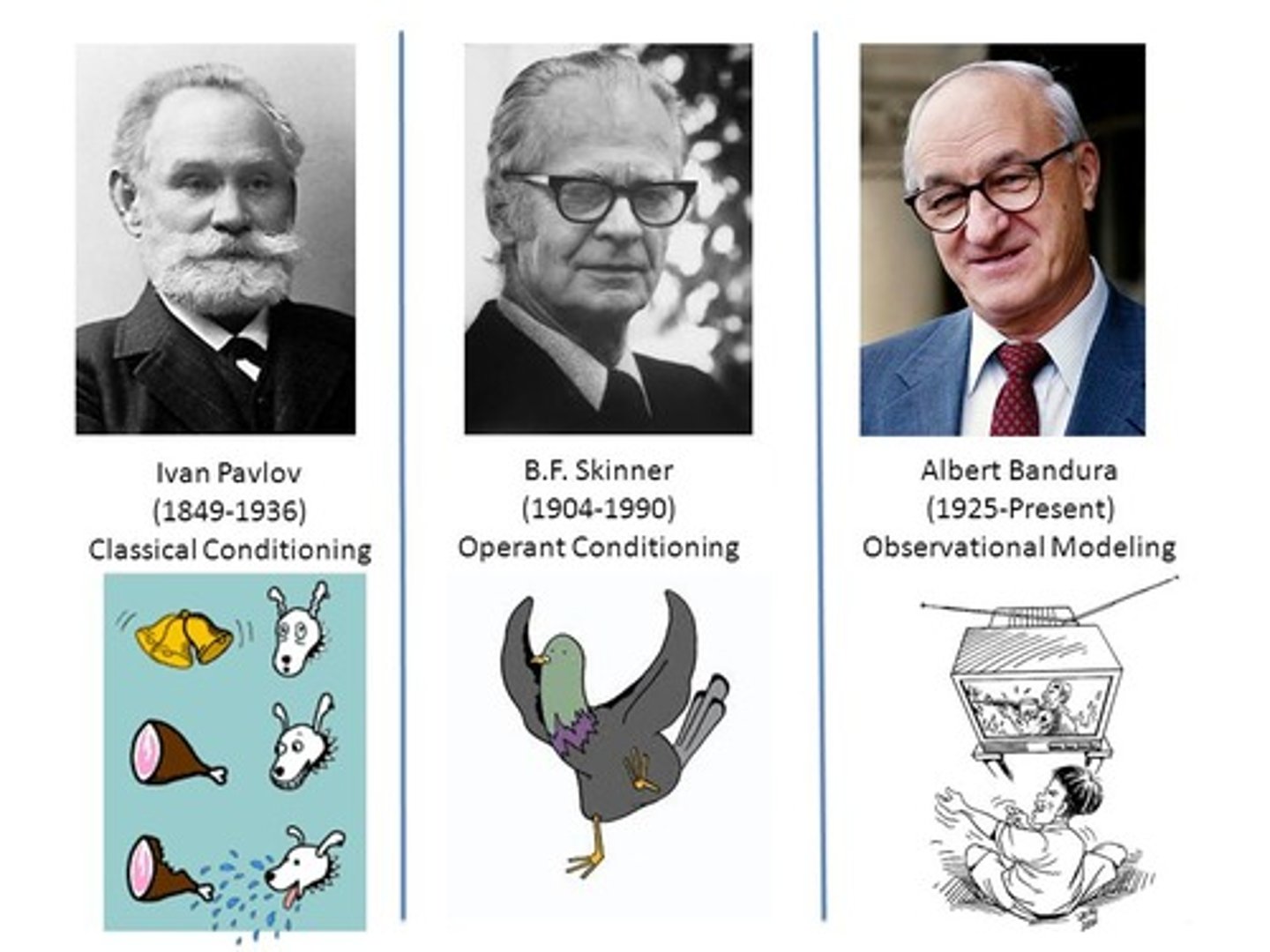
CRB True or false? Behaviorism is Dynamic, since it views people as blank slates and that the environment, reinforcement and punishment completely determine behavior and personality.
False. Behaviorism is Deterministic, since it views people as blank slates and that the environment, reinforcement and punishment completely determine behavior and personality.
Describe the Bobo Doll Experiment. What was the major conclusion of this experiment?
Kids observed a man beating up a Bobo Doll. After the children were tasked with putting together a frustrating puzzle, they were given the opportunity to play with a room full of toys. Several children copied the man's actions and proceeded to beat up the Bobo Doll. The conclusion was that children can learn through observation.
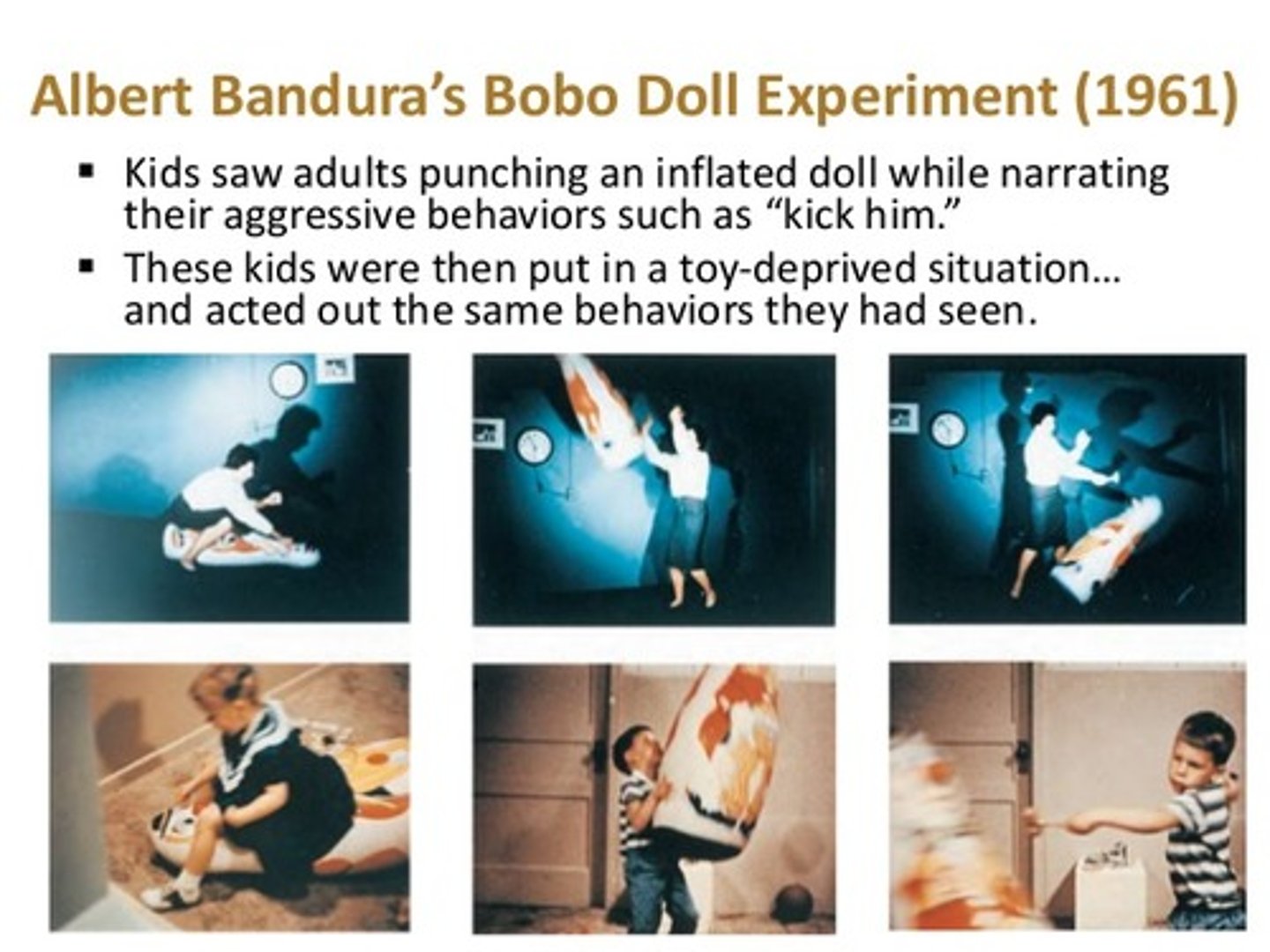
In the second version of the experiment, the children were shown a man getting punished after he beat up the Bobo Doll. Some children still copied the man, but other children didn't. These children still learned the behavior, though, as evidenced by their ability to imitate the behavior after being bribed with candy. What did this reveal about the Learning-performance Distinction?
This experiment revealed that just because you learn something doesn't mean you are going to actually perform what you learned. This is the essence of the Learning-performance Distinction.
Bandura's Social Cognitive Theory states that you are reliant upon four factors that will determine whether or not you will learn something through observation. What are these four factors (Hint: Am I Motivated?)? Describe each and how it might apply to the Bobo Doll Experiment.
Attention - Were the kids paying attention to the video of the man beating up the Bobo Doll?
Memory - Did the kids remember what the man did and said?
Imitation - Were the kids physically able to kick and punch?
Motivation - Were the kids motivated to beat up the Bobo Doll?
CRB In Bandura's Social Cognitive Perspective Theory, which of the following are central concepts?
I. Behavior patterns can be shaped by conditioning and observational/vicarious learning.
II. The cognitive component includes covert mental processes and situational opportunities.
III. Cognitive Behavioral Therapy views feelings and behaviors as caused by actual events, whereas thoughts are the aftermath of the behaviors.
(A) I only
(B) I and II only
(C) II and III only
(D) I, II and III
(A) I only
Each of the following are true statements about Cognitive Perspective Theory:
I. Behavior patterns can be shaped by conditioning and observational/vicarious learning.
II. The cognitive component includes covert mental processes. There is also an Environmental component that includes and situational influences and opportunities.
III. Cognitive Behavioral Therapy views feelings and behaviors as reactions to a person's thoughts about actual events, not reactions to the events themselves.
Describe the role of Defense Mechanisms.
They are a way of protecting ourselves from or dealing with our unconscious wishes, desires, and impulses. They act as a psychological shield.
Fred's wife is having an affair. Instead of dealing with the problem , he simply ignores it and carries on with life as usual. Which defense mechanism is Fred most likely implementing?
(A) Regression
(B) Suppression
(C) Repression
(D) Denial
(D) Denial
Fred is pretending that the problem is not true, which is what is done in Denial.

Jessie is always getting upset with her parents. She often has temper tantrums and gets angry very easily. Instead of dealing with her problem, she blames her parents, believing that they are the ones with the anger issues. Which defense mechanism is Jessie most likely implementing?
(A) Passive Aggression
(B) Displacement
(C) Projection
(D) Rationalization
(C) Projection
Jessie is projecting her feelings and problems onto her parents, saying that they have the problem instead of her. This is what is seen in projection.
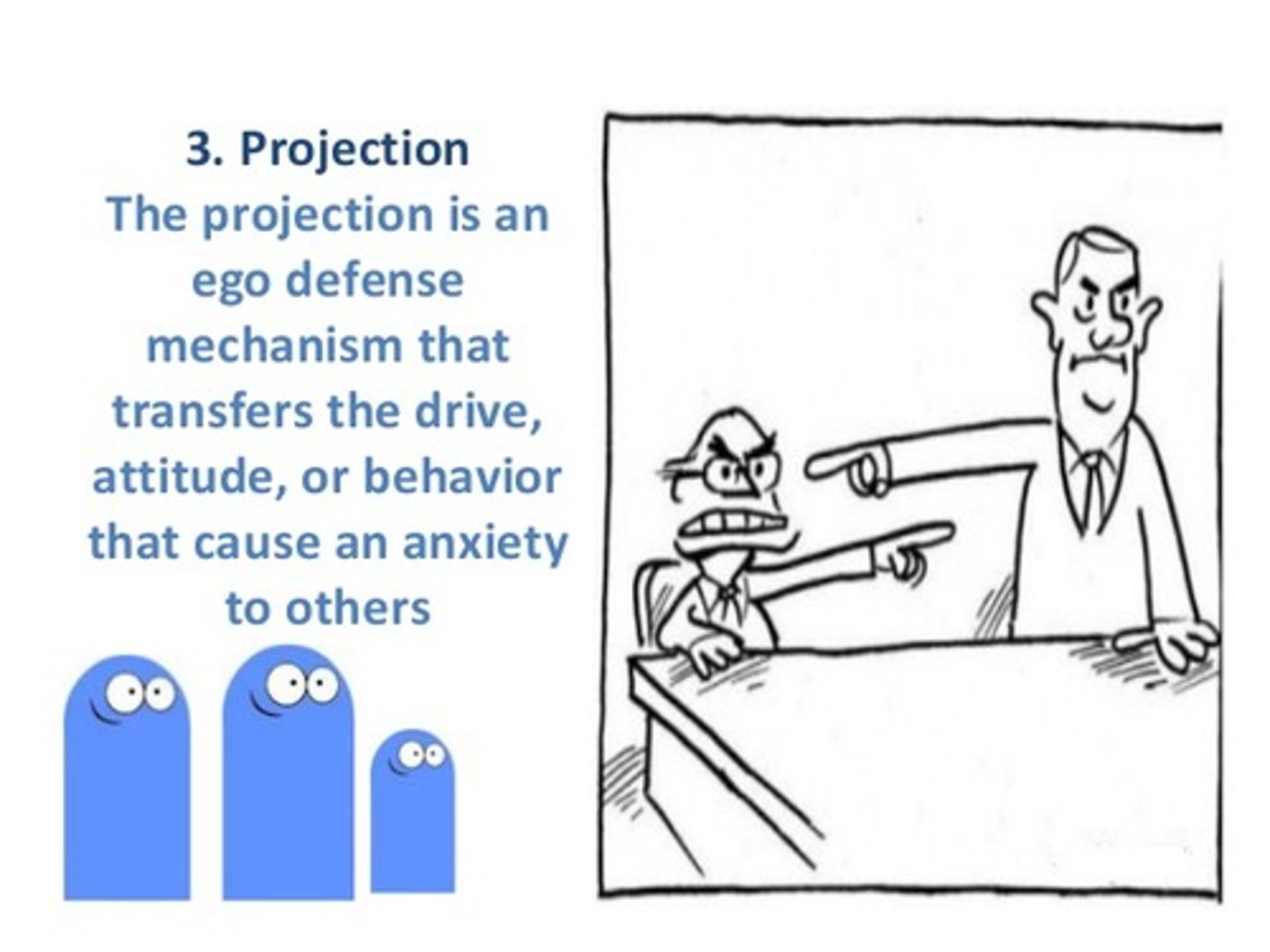
Jessie's parents then start to fall prey to "Projective Identification." Explain how this might play out.
If Jessie's parents then start to fall prey to "Projective Identification," they would begin to believe that they really do have anger issues, and start to act like it.
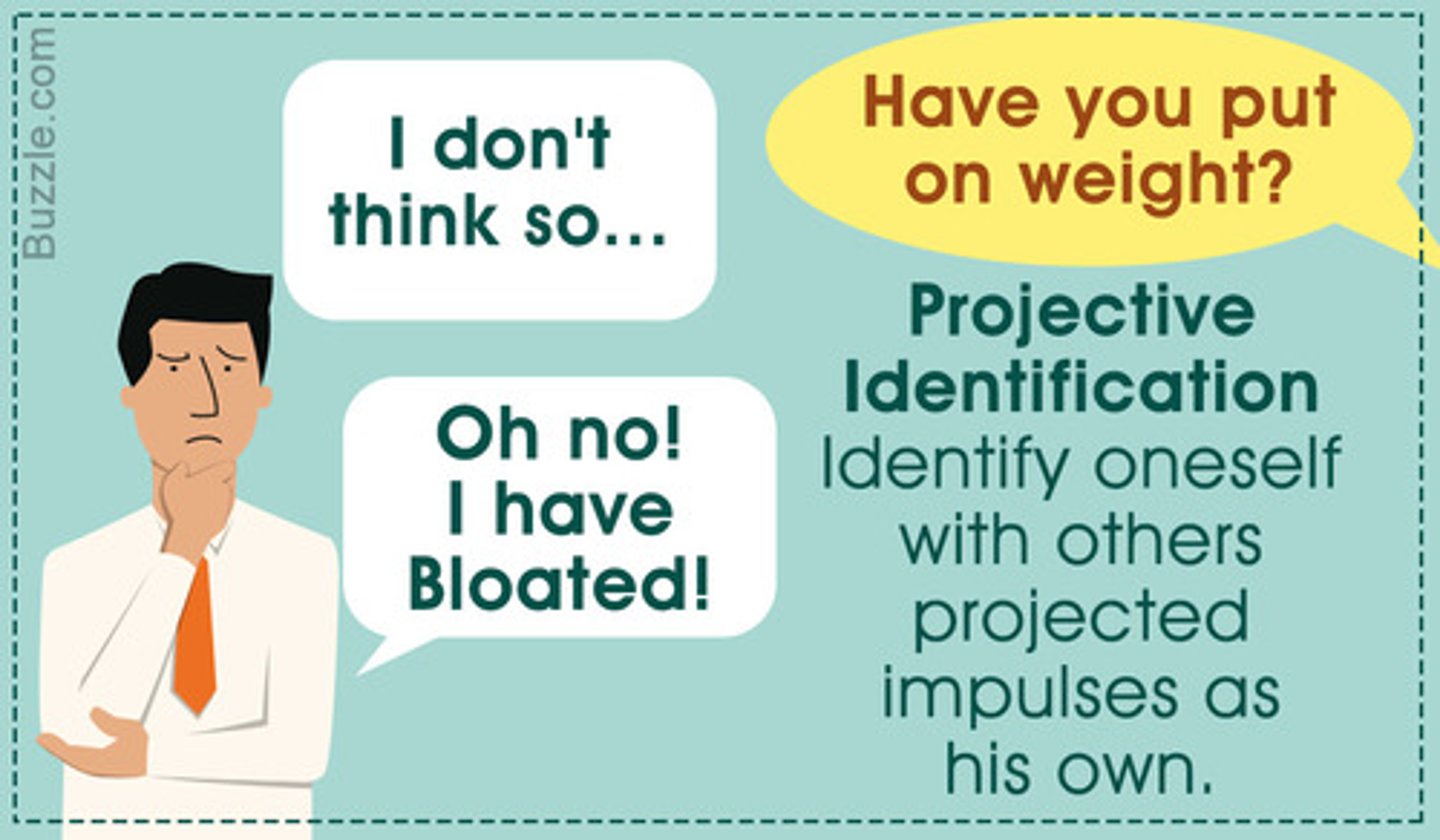
Jack sees himself as a pretty agreeable person. He rarely gets upset or starts fights with others. He gets a new boss at work one day, and feels like his boss is pushing him around and treating him like a slave. Instead of confronting his boss, Jack underperforms on key projects in order to frustrate his boss. Which defense mechanism is Jack most likely implementing?
(A) Passive Aggression
(B) Displacement
(C) Projection
(D) Altruism
(A) Passive Aggression
Jack is getting back at his boss without direct confrontation as is seen in Passive Agression. It is often carried out by failing to do something. It is an indirect or passive way of expressing one's feelings.
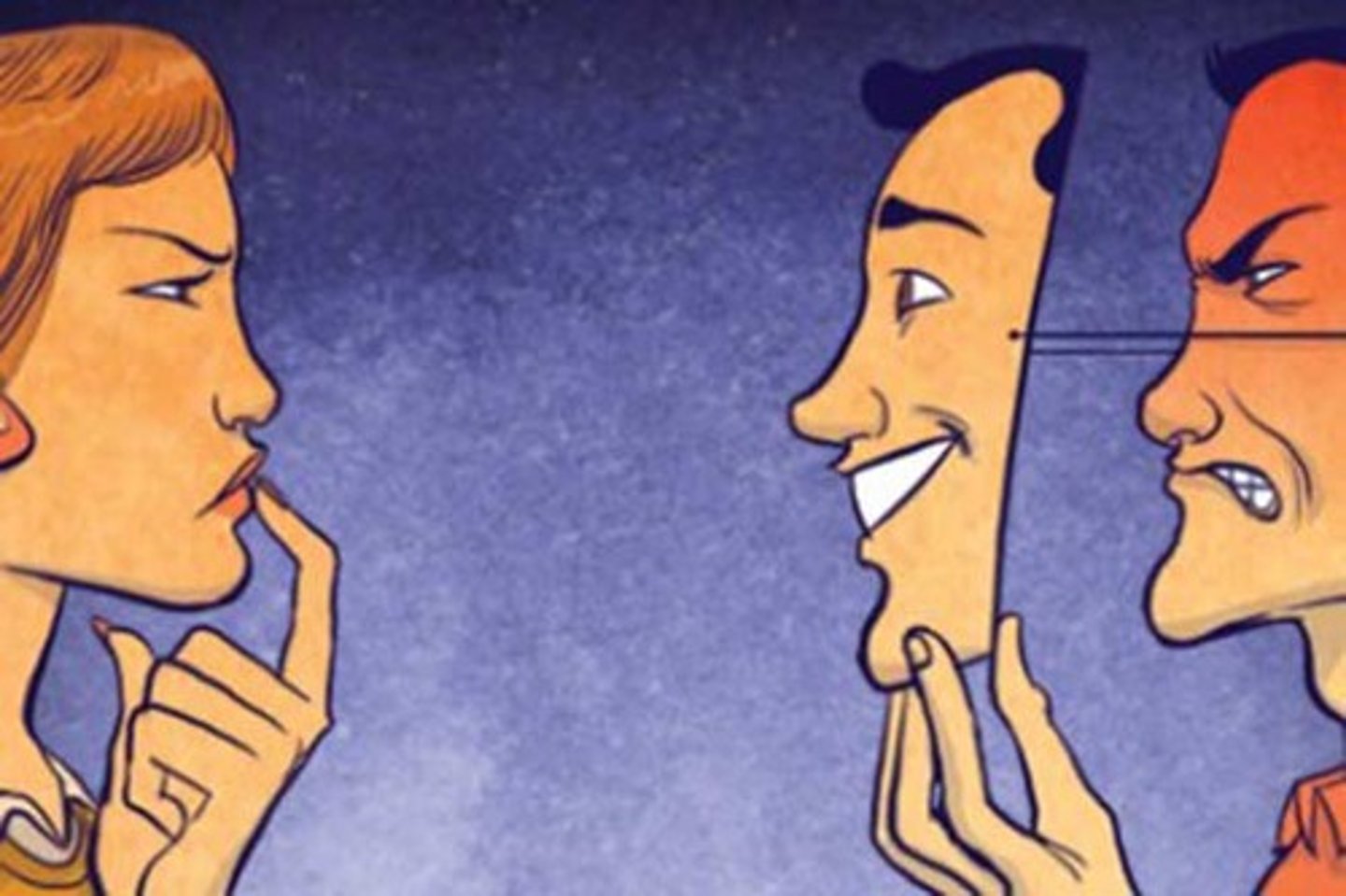
CRB Melinda went to a psychologist after her parents set up an appointment. To observe Melinda's unconscious feelings, the Psychologist asked her to interpret a Rorschach Inkblot Test. Which of the following defense mechanisms is the psychologist relying upon Melinda using to observe her unconscious feelings when interpreting the Inkblots?
(A) Reaction Formation
(B) Displacement
(C) Projection
(D) Sublimation
(C) Projection
The Psychologist is hoping that Melinda will attribute her unconscious feelings onto the shapes of the Rorschach Inkblots. This would be best described by Projection.
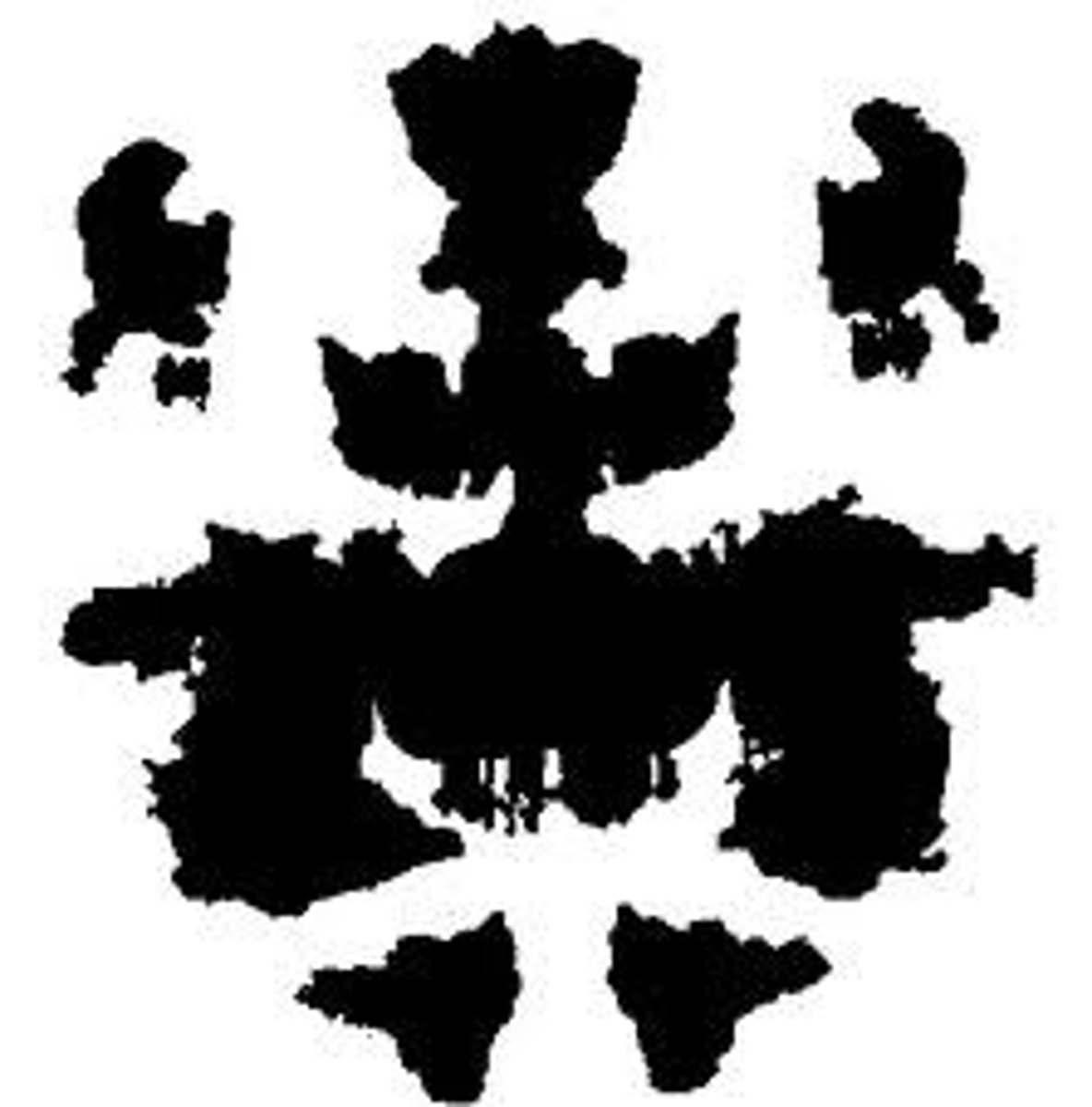
Jeffrey struggles with Alcoholism. Instead of getting emotional about his problem, he instead tracks his alcoholic intake, reads up on scientific literature, and plans out his day to avoid triggers. He speaks about his problem using scientific terminology and rarely displays emotions in regards to his problem. Which defense mechanism is Jeffrey most likely implementing?
(A) Sublimation
(B) Humor
(C) Rationalization
(D) Intellectualization
(D) Intellectualization
Jeffrey is implementing the intellectualization defense mechanism by separating the emotion from the ideas of the problem. He is making something emotional into something more academic.

Zane was drunk driving and ended up killing two young girls and their mother. Instead of feeling guilty about his actions, Zane is convinced that it wasn't his fault because he wasn't actually very drunk (even though he was). Which defense mechanism is Zane most likely implementing?
(A) Sublimation
(B) Humor
(C) Rationalization
(D) Intellectualization
(C) Rationalization
Zane is convincing himself that it wasn't his fault using false logic, which is characteristic of Rationalization.

Christy sees her father die before her very eyes. Whenever she talks about the problem with a therapist, she starts sucking her thumb as a way to comfort herself. Which defense mechanism is Christy most likely implementing?
(A) Regression
(B) Suppression
(C) Repression
(D) Denial
(A) Regression
Christy is resorting to behavior that is characteristic of an earlier stage of development as is seen in Regression.

Mary has a subconscious wish of kissing Brad Pitt's knee. Instead of acknowledging her strange desire, she unconsciously pushes it down into her unconscious. Which defense mechanism is Mary most likely implementing?
(A) Regression
(B) Suppression
(C) Repression
(D) Denial
(C) Repression
Mary is pushing an undesirable wish down into her unconscious, which is exactly what happens in Repression.
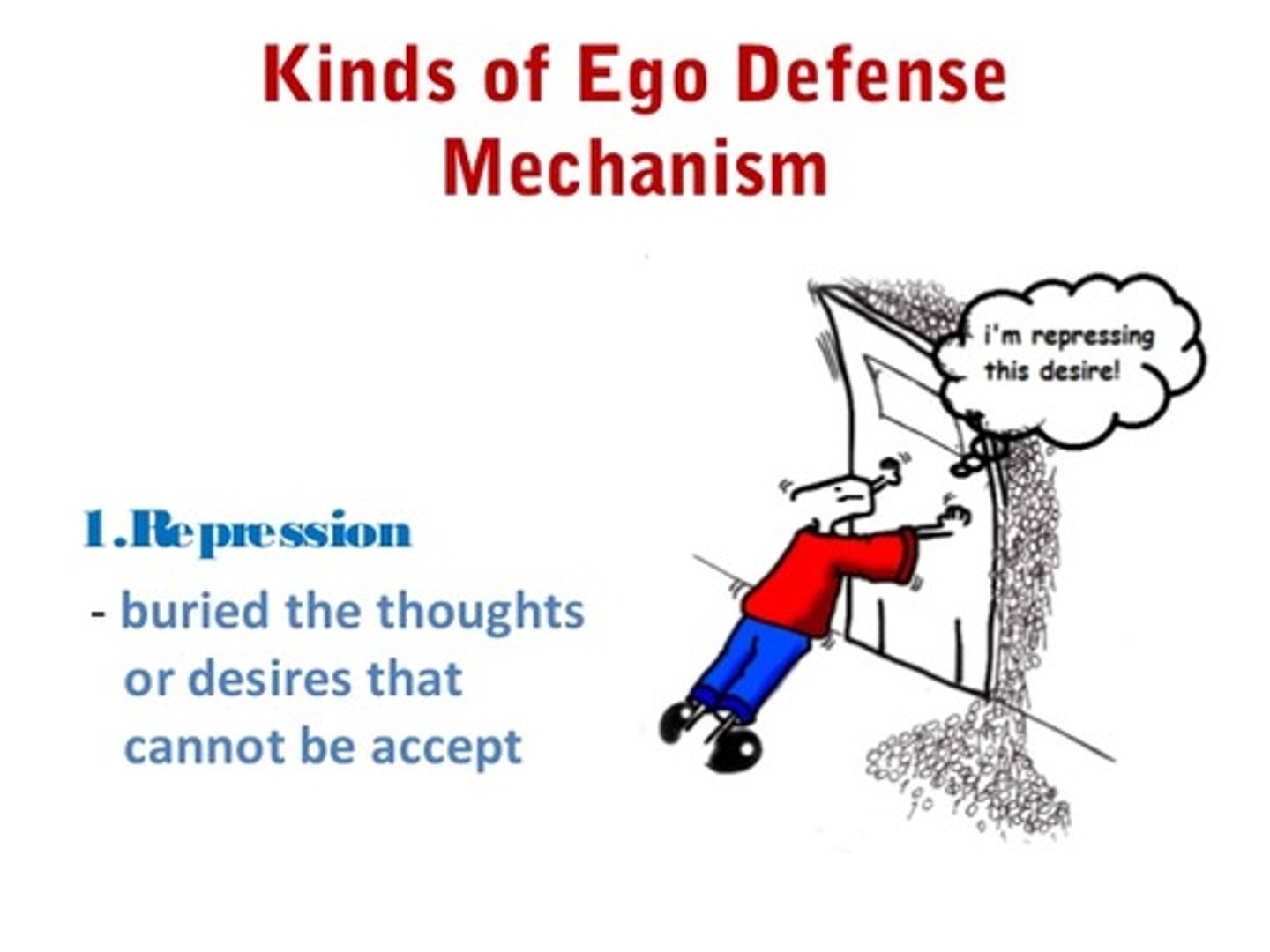
Sarah is in an abusive relationship with her husband. Instead of confronting him, however, she takes her frustration out on her children by bossing them around. Which defense mechanism is Sarah most likely implementing?
(A) Passive Aggression
(B) Displacement
(C) Projection
(D) Altruism
(B) Displacement
Sarah is taking out her frustration on her husband on an easier target, her children. This is commonly seen in Displacement.
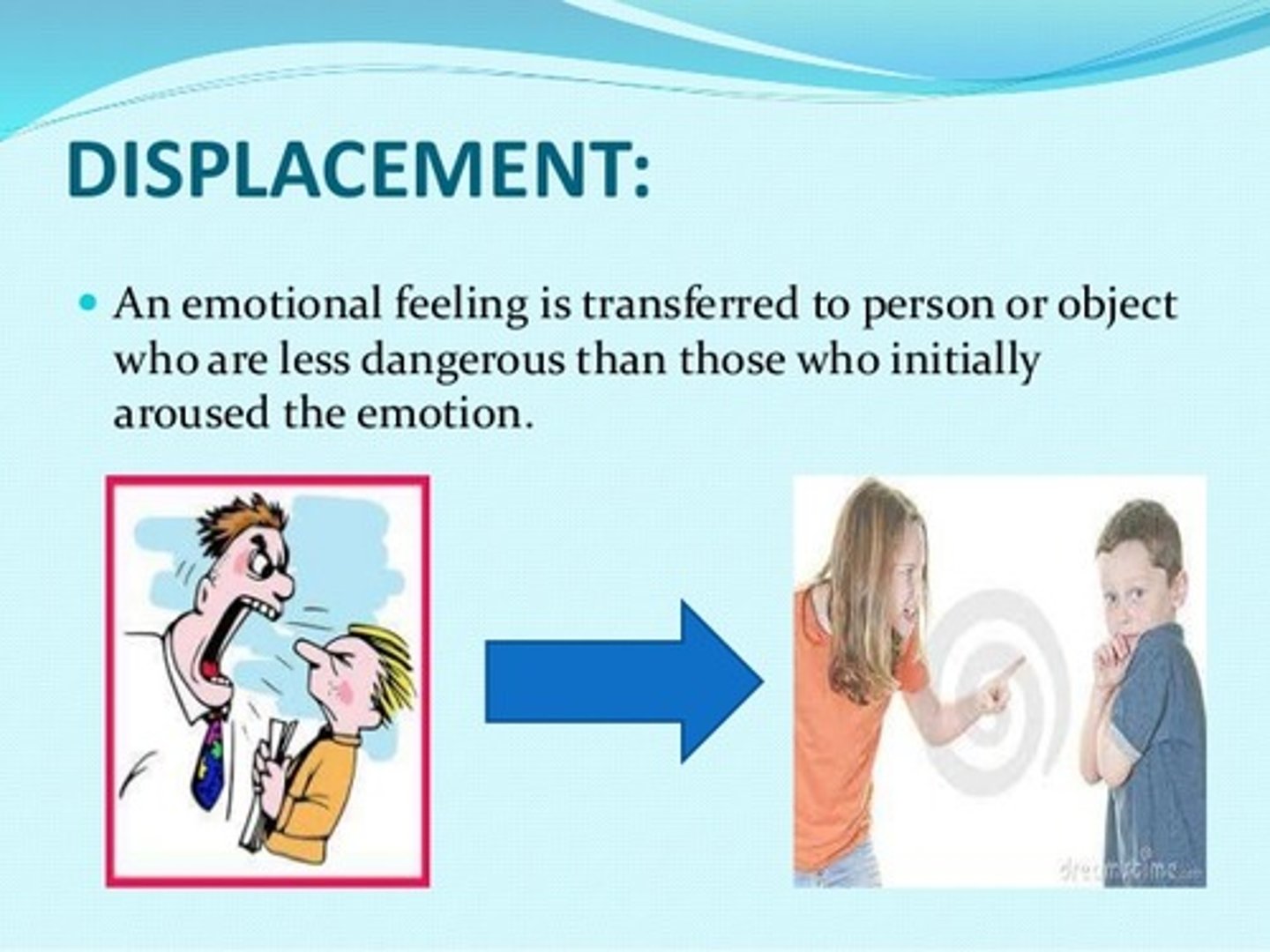
Jeremy's father recently passed away. Jeremy was extremely close to his father, but instead of getting upset or feeling bitter, he talks with his family about the good times he had with his dad, telling jokes and lightening the mood. Which defense mechanism is Jeremy most likely implementing?
(A) Sublimation
(B) Humor
(C) Rationalization
(D) Intellectualization
(B) Humor
Jeremy is dealing with his feelings by using Humor.
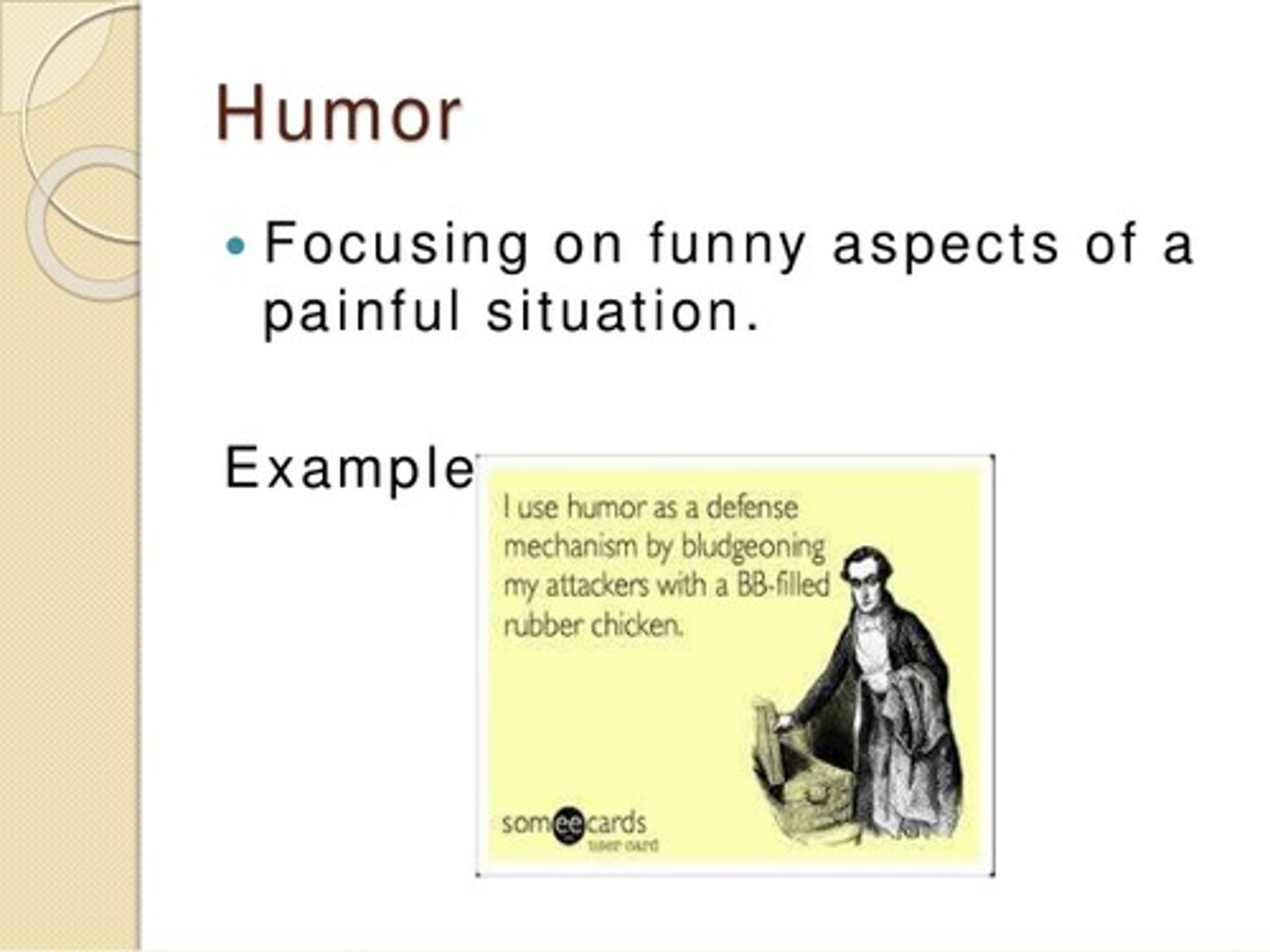
Lexy has strong violent urges to hurt other people. Instead of hurting others, though, she lets out her feelings through art. Which defense mechanism is Lexy most likely implementing?
(A) Sublimation
(B) Humor
(C) Rationalization
(D) Intellectualization
(A) Sublimation
Lexy is channeling her negative feelings into a more positive activity, which is what happens in Sublimation.

Heather wants to beat up her brother. She consciously pushes these thoughts down into her unconscious in order to avoid actually carrying out those actions. Which defense mechanism is Heather most likely implementing?
(A) Regression
(B) Suppression
(C) Repression
(D) Denial
(B) Suppression
Suppression is a conscious pushing of thoughts out of one's mind into their unconscious as is the case here.
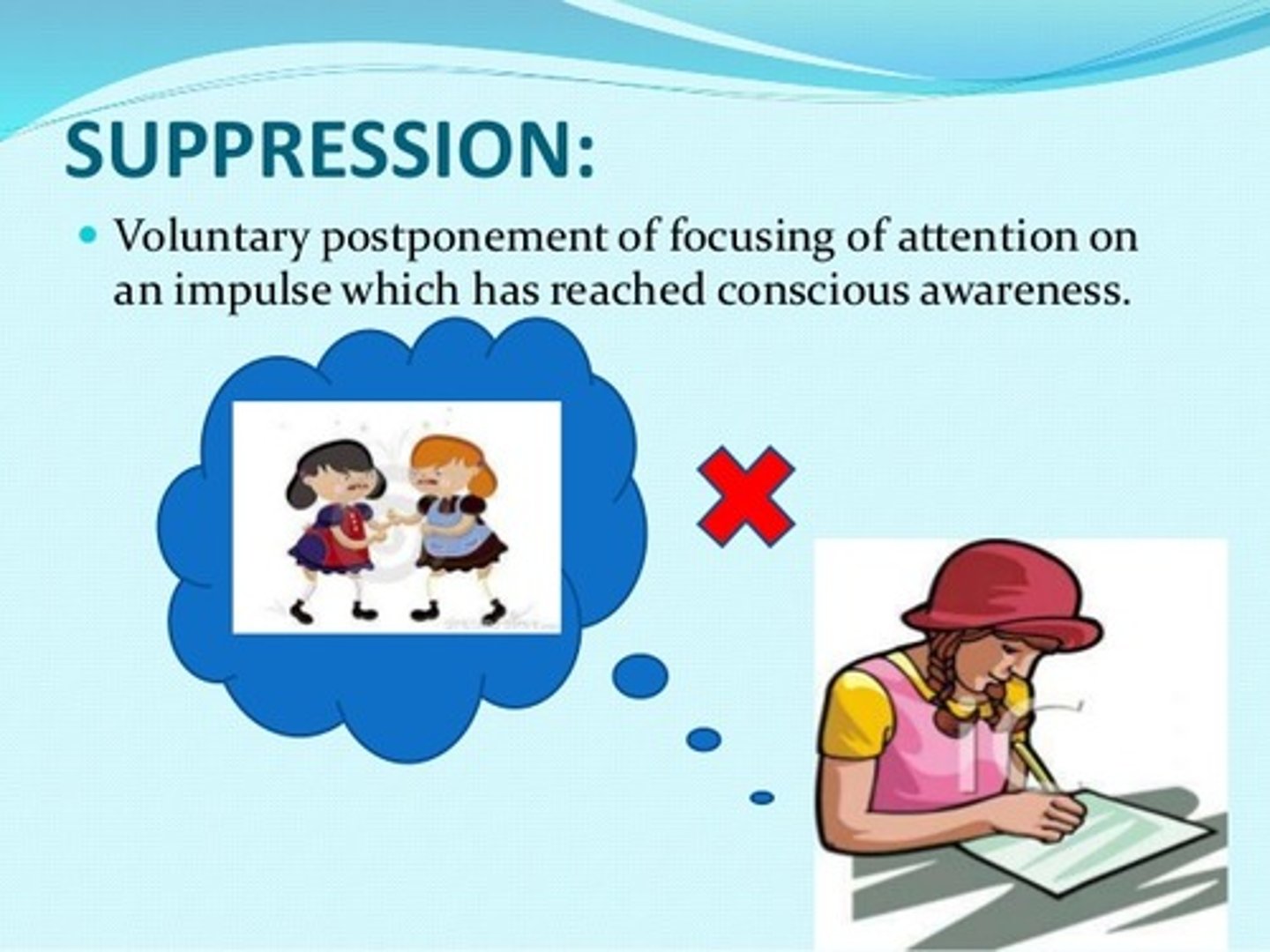
Dee was a serial killer. He was extremely violent and was sentenced to prison for the remainder of his life. While in prison, he finds joy and forgets his problems as he focuses on serving his fellow inmates, trying to make their stay in prison more enjoyable. Which defense mechanism is Dee most likely implementing?
(A) Passive Aggression
(B) Displacement
(C) Projection
(D) Altruism
(D) Altruism
Dee is forgetting about his own problems and finding joy in serving others. This is an example of Altruism.

If Freddie has a strong attraction to Hannah Montana, how might he use the Reaction Formation Defense Mechanism to deal with this?
Freddie might actively voice disgust with her and say that he hates her music. In Reaction Formation, an individual expresses the opposite emotion to the one they actually have.
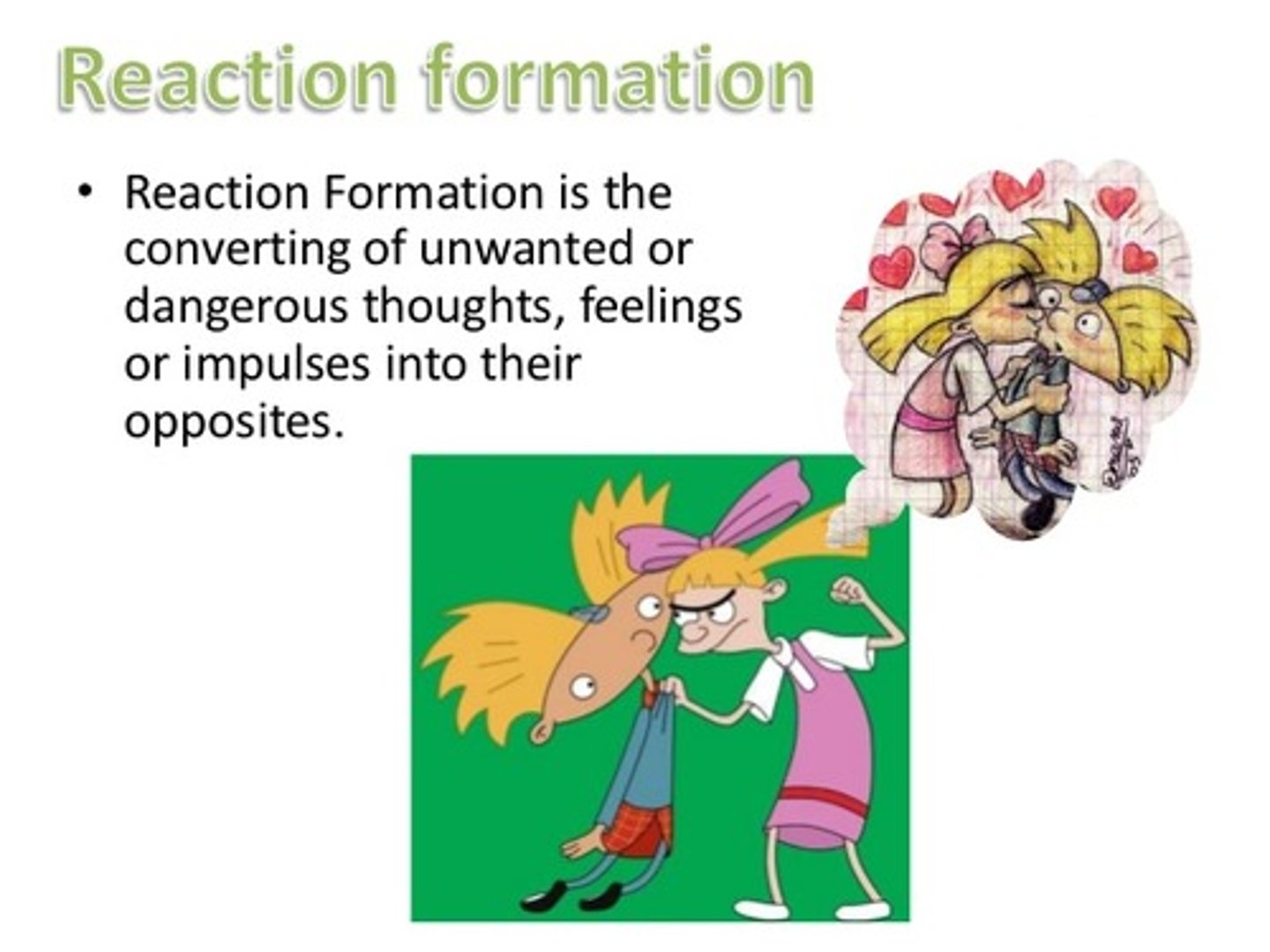
CRB There is also a Situational Approach to explaining behavior. Which of the following is NOT a correct statement about the Situational Approach?
(A) Traits are considered to be the internal, stable and enduring aspects of personality and are consistent across situations.
(B) States are the unstable, temporary, situational parts of personality that are influenced by the environment.
(C) In a familiar situation, a person's traits will dictate a certain state and cause repeatable behaviors.
(D) In an unfamiliar situation, Social Cues will modify someone's state and behavior.
(C) In a familiar situation, a person's traits will dictate a certain state and cause repeatable behaviors.
Each of the following are correct statements about the Situational Approach to explaining Behavior:
I. Traits are considered to be the internal, stable and enduring aspects of personality and are consistent across situations.
II. States are the unstable, temporary, situational parts of personality that are influenced by the environment.
III. In an unfamiliar situation, Social Cues will modify someone's state and behavior.
CRB Many psychologists study and debate the Person-Situation Controversy, which tries to consider how much of a person's reactions are due to personality and due to the situation itself. If a Biological Theorist and Situational Theorist debate this, which expert would you expect to emphasize each part, and why?
The Biological Theorist will argue that practically all of the behavior are due to personality and the person's nervous system makeup, especially the reward and punishment systems.
The Situational Theorist would give much more weight to States and the situation itself. Situationalists also call this debate the "Trait Versus State Controversy", so they do not agree on exactly how much each part contributes. They will still think situation contributes more than a Biological Theorist will admit though!